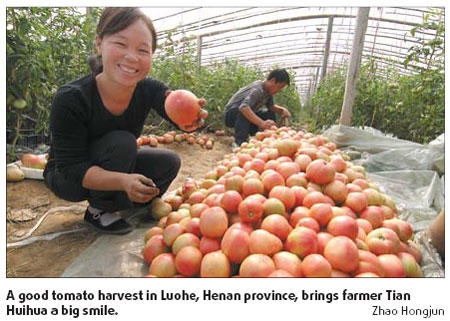
|
CHINA> National
 |
|
On the reform road to rural areas
By Wu Jiao (China Daily)
Updated: 2008-10-28 07:50
The central leadership has promised longer-term land use rights and very tight land acquisition regulation to farmers as part of its rural reform. The proposals, still to be written into law, carry forward China's comprehensive land reform that began in the late 1970s with the dismantling of the commune system. The intervening years have seen many rural youths join the workforce, driving the country's economic growth and making it the fourth largest economy in the world. But rural China is still home to 55.1 percent of the population, for whom land remains the greatest source of economic security. Desperate move The first stage of rural reform was implemented between 1978 and 1979. The process that continued for three decades saw the transformation of many a poor village into success stories. Farmers responded with spontaneous initiatives to overcome the commune system's consequences, such as poverty and hunger. They leased out farmlands under their collective management to individual households, creating the concept of household contract responsibility system. An agricultural boom followed, prompting the central government to introduce farm contract system across the country in 1982. As a system, it accorded due rights and rewards to farmers who produced more. The Western media tended to call it "decollectivization" without realizing that the community ownership of land was never abolished. What was transferred for private control was the management right. Agricultural production in the first half of the 1980s reached a rate several times higher than the average of many previous decades. Grain output touched 407 million tons in 1984 after a net increase of more than 100 million tons in just six years. Thus, feeding China, the world's most populous nation, no longer posed a problem. Rural income, too, rose during the period. With a 150 percent increase in the average price of farm products, farmers began seeing up to a 250 percent rise in their per capita cash income. But then oversupply caused a major setback in 1985. That caused a 6 percent drop in grain output and slowed down farmers' income, making farming a less profitable job.
 To further develop rural China, the government shifted its rural reform focus to creation of off-farm jobs in industrial units, run by village communities. Such units were called township and village enterprises (TVEs). Since TVEs were mostly small and flexible in organizational structure, they could compete quite easily against the then highly bureaucratized State-owned enterprises, especially when it came to meeting consumers' demand. Quite a few Chinese consumer brands were set up by the TVEs in the 1980s, with most of them being based in the Pearl River or Yangtze River delta regions. Such brands include Konka TV sets, Midea electric cookers and Kelong refrigerators, But the dream run of TVEs ended in the mid-1990s with the tightening of macro-economic control to curb the runaway economic growth. Most of the TVEs had to close shop. According to some estimates, about 30 percent of them went bankrupt, and many others, originally funded by community money, were restructured into private or joint-stock companies to build a more competitive ownership structure. Those that survived the credit crunch were the most competitive ones. City rush Though TVEs are largely a thing of the past now, they opened the road for rural people to get urban jobs. Youths from rural areas began flooding into cities in the mid-1990s, even though they faced a lot of restrictions and difficulties. Some estimates say about 200 million such people are now employed on long-term or short-term bases in cities. |